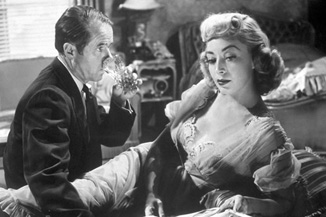Classic Movie Review: The Killing
By Josh Spiegel
April 3, 2011
BoxOfficeProphets.com

The Killing is a heist film by way of film noir, starring mostly unrecognizable actors. The main exception is Sterling Hayden, who’d go on to collaborate with Kubrick as Jack D. Ripper in the classic satire Dr. Strangelove, or How I Learned to Stop Worrying and Love The Bomb. Hayden plays the ostensible lead, Johnny, a crook who gets a crew together to steal $2 million from a horse racetrack during a hotly contested race. What’s most impressive about The Killing is something that’s notably absent from most of Kubrick’s classics: its economy of time. The Killing is just 83 minutes long; as a random comparison, Disney’s classic animated feature Pinocchio is 88 minutes long. Within Kubrick’s filmography, The Killing is one of the shortest films he made, by a long shot. Hell, Barry Lyndon and Eyes Wide Shut are about twice as long.
If you’re a fan of such films as Dr. Strangelove, 2001, The Shining, and Full Metal Jacket, you may not know what to think of The Killing. The Killing is straightforward and I’d wager that no one would identify the film as something from Kubrick if they didn’t know he co-wrote and directed it. There are no identifying features here; no stunning tracking shots, no Kubrick stares, just a tightly wound film noir and heist. Don’t get me wrong: The Killing is a good movie, and a fine start to Kubrick’s career, but unlike most of his future work, which somewhat subverts various genres, this is not packed with surprises. What there is to embrace with The Killing is quirky character work from actors like Hayden and Elisha Cook, Jr., as well as a suspenseful second half with some innovative screenwriting techniques — at least, innovative for the time.
Something that is a crutch throughout the entire film — and a truly odd choice for someone so idiosyncratic as Kubrick—is the voiceover narration that tells us…everything. The narrator of The Killing isn’t one of the onscreen characters, but something straight out of Dragnet or another cheesy cop show from the 1950s. We’re told where the characters are, why they want to rob the racetrack, what their relationships are, and so on. There are very few scenes in this film that tell us something indirectly; pointedly, those are the best scenes in the film. An example is midway through, when George, the cowardly racetrack clerk (Cook), is discussing a recent run-in with the gang with his femme fatale wife Sherry. They both got roughed up a bit because George told his wife about the heist; Sherry manipulates George by making him think that Johnny had his way with her.
That is a scene filled with tension and seething distaste from both characters, as well as a sense of foreboding. Can you imagine how boring the scene would be if a narrator told us this as opposed to us watching it unfold? I’m not sure what Kubrick was thinking here — I know, big surprise — but having an unseen narrator is the major issue with this film. I also think that, while the film is so short and precisely timed, the heist genre makes it so difficult to tie yourself to one character. We may not sympathize with the crooks, but because Kubrick’s jumping between Johnny and George before the heist goes down, and because the heist takes up the final 35 minutes of the film, there’s no one to stick with.
Kubrick is well-known for his cold, distant sensibility and his eye for striking imagery. Arguably, his best visual work is thanks to color (though Paths of Glory is as arresting as 2001, in its own way), so The Killing doesn’t feature as much impressive work due to it being in black-and-white. That said, an early scene where Johnny lays out the plan to his cohorts makes solid use of the darkness of a room. While it may seem a bit too noirish for some viewers, the shrouds of black that permeate this scene are almost breathtaking to behold. Frankly, the truly impressive aspect of the filmmaking here is the editing. The heist features a storytelling technique that, these days, isn’t too revolutionary. Back in the 1950s, though, I wonder how groundbreaking it was. We see the heist from each person’s point of view, essentially jumping back and forth between the beginning of the heist and the end of it.
As you know if you’ve read this column long enough, I love film noir. I’m not sure that I love each film from Stanley Kubrick, but his visual stamp is impressive enough that I’ve even been able to accept that 2001 is an imagistic masterpiece. I will probably never get behind the film being as much of a masterpiece as it’s pegged by most critics, but there’s no question that its influence is as evident today as it was 40 years ago. Watching The Killing reminded me of watching the first films from directors like Christopher Nolan or Paul Thomas Anderson, Following and Hard Eight, respectively. All three films show promise and glimmers of talent (and Nolan didn’t have any name actors to work with, which is all the more impressive), but you leave each film with potential that hasn’t been met yet. The Killing is a good movie, but it’s not so much a Stanley Kubrick film, as much as a movie he happened to direct when he was young.